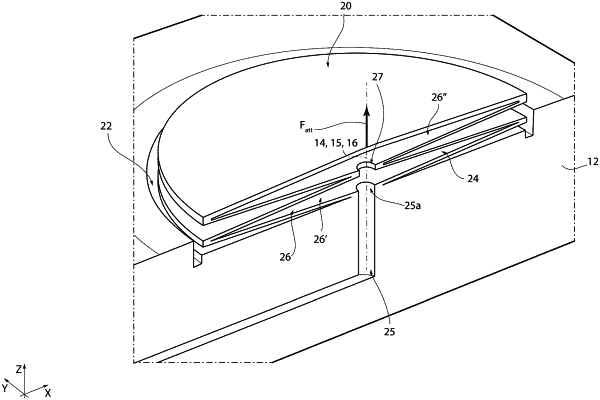| CPC B81B 3/0078 (2013.01) [B81B 2201/036 (2013.01); F04B 43/046 (2013.01)] | 21 Claims |

|
1. A MEMS actuator, comprising:
a semiconductor body of semiconductor material having a first surface and a second surface opposite to each other along a first axis, and defining a housing cavity which faces the first surface of the semiconductor body and which has a bottom surface opposite to the first surface of the semiconductor body along the first axis, and one or more lateral surfaces which join the bottom surface of the housing cavity to the first surface of the semiconductor body, the semiconductor body further defining a fluidic channel extending into the semiconductor body and having a first end extending through the bottom surface of the housing cavity; and
a strainable structure which extends into the housing cavity, is coupled to the semiconductor body at the bottom surface of the housing cavity, extends at a distance from the one or more lateral surfaces of the housing cavity, has a top surface opposite to the bottom surface of the housing cavity with respect to the strainable structure, and defines an internal space which faces the first end of the fluidic channel and which comprises at least a first internal subspace and a second internal subspace superimposed on each other along the first axis and pneumatically connected to each other and to the fluidic channel;
wherein the strainable structure has, in section along a first plane orthogonal to the first axis, an annular shape which delimits the internal space radially with respect to the first axis; and
wherein said first internal subspace and second internal substrate are configured to expand in response to a fluid pumped through the fluidic channel to generate an actuation force at the top surface of the strainable structure.
|